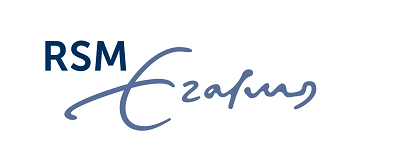- Innovation
Innovation Despite Constraints
Contrary to conventional wisdom some level of constraint helps drive innovation
As larger businesses look to innovation to lift them out of the post-pandemic doldrums there are lessons to be learnt from this.
A recent study into creativity and innovation under constraints, from the Rotterdam School of Management, Cass Business School, and Drexel University, revealed that within limits, constraints on innovation have a surprisingly positive impact—increasing the likelihood of success. Though this positive effect disappears when constraints are excessive.
The research, based on the close analysis of 145 academic studies, defined innovation as being both the development and the implementation of novel ideas, processes, or products, and considered these three groups of constraints on innovation:
- Input constraints– the limited availability, or unavailability, of resources such as time, human capital, funds and materials
- Process constraints– restrictive procedures and rules imposed on the processes involved in innovation
- Output constraints– requirements placed on the result—for example, an innovative cannot use certain materials or must meet certain quality specifications
The researchers also identified the three routes through which innovation occurred:
- The motivational route – the intrinsic motivation to innovate
- The cognitive route – cognitive processes used in the development and implementation of innovation
- The social route – interactions between individuals, teams and organizations involved in innovation activities. Interdisciplinary teams are using the social route to innovation.
Analysis of the interplay between these dynamics led the researchers to an understanding of how constraints influence innovation—and to the unexpected conclusions concerning the positive vs. negative impact of constraints.
The researchers found consistent evidence that an abundance of resources can have a detrimental effect on motivation: with no constraint on time the urgency to innovate is lost. The same complacency can result from an overabundance of funds. In sum, rather than torpedoing innovation, input constraints can increase the motivation to innovate.
The same is true for the impact of input constraints on the cognitive route—albeit the evidence here is more intuitive—rather than having a negative impact, a lack of resources spurs innovation.
In the study, the researchers describe how bootstrapping, which requires entrepreneurs to think of different ways to effectively use their limited funds, exemplifies the positive impact of input constraints. In contrast, cognitive fixation—a psychological term that simply means being fixated or focused on well-known solutions and being unable to imagine or search for alternatives—exemplifies the negative impact of a lack of input constraints: research shows that the availability of abundant resources is more likely to lead to cognitive fixation, and thus undermine innovation.
Fostering innovation with constraints
This study reverses the conventional wisdom that constraints undermine innovation—within reason. So, rather than eliminating constraints, business leaders should consider imposing some. For example, they might ask their innovation team to develop a minimum viable product, giving them limited funds and time (input constraint). Or perhaps require daily stand-up meetings (process constraint) and early customer feedback (output constraint) to spark the motivation to innovate, and lead to cognitive breakthroughs or social-based or inspired solutions. Then, once leaders become are more comfortable with using constraints, they should explore the different routes from constraint to innovation, searching for the tailored constraint structure that works best for their team.
Access the full research paper here: ‘Creativity and Innovation Under Constraints: A Cross-Disciplinary Integrative Review’. By Oguz A. Acar, Murat Tarakci and Daan van Knippenberg. Journal of Management
One of Europe’s leading business schools, and ranked among the top three for research, RSM provides ground-breaking research and education furthering excellence in all aspects of management.
ARTICLES YOU MIGHT LIKE
VIEWPOINT
Cognitive neuroscientist, Lynda Shaw, explains how to understand and support intrapreneurs
DEVELOPING LEADERS QUARTERLY MAGAZINE AND WEEKLY BRIEFING EMAILS


































